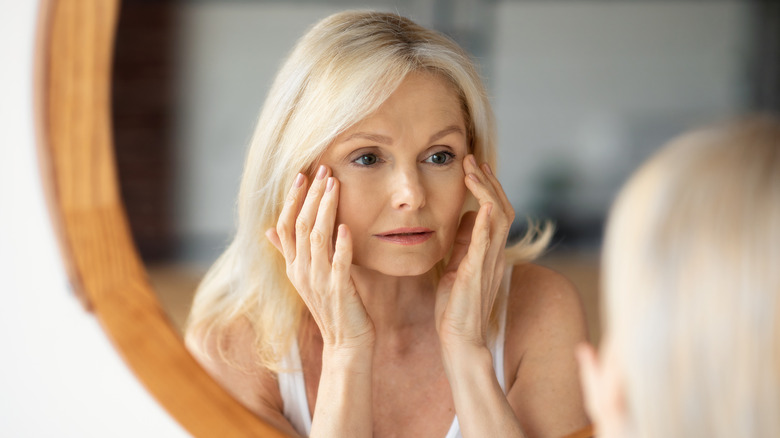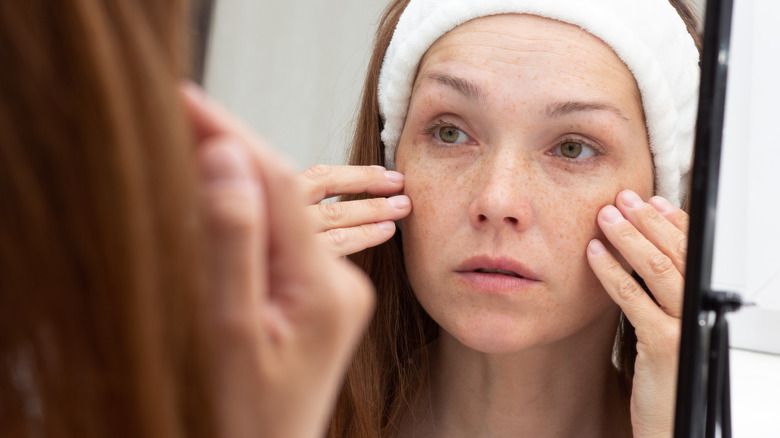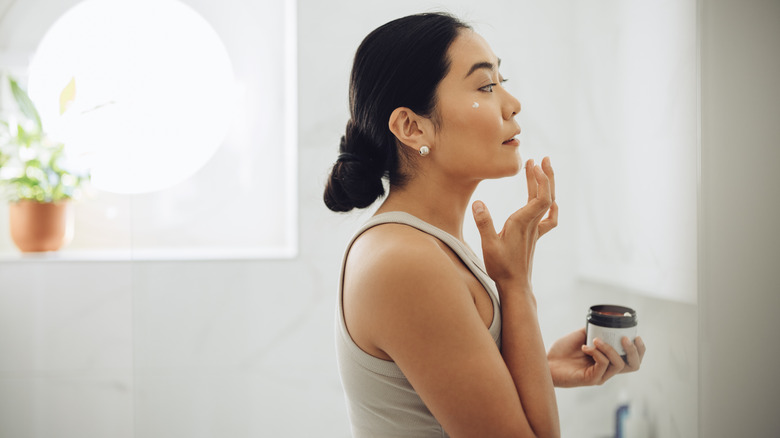This Is The Age Your Face Changes The Most, According To Science
Much like our body shape changes as we grow older, our face also follows suit. We all observe changes in our facial characteristics and structure, but at what age does this happen exactly? One Redditor flocked to the online community, asking people how old they were when they noticed that their faces started changing. Even though answers varied, the majority seemed to agree that the most dramatic changes happened in their mid-30s. Some argued that changes happened overnight while others admitted that they only really paid attention to these changes once they hit the mid-life mark of 40.
Unfortunately, the answer to this question is not one-age-fits-all. People go through different stages of life at different paces, so reaching a definite answer isn't exactly clear-cut. To parse out such subjective territory, we spoke exclusively to Dr. Aanand Geria, board-certified dermatologist and clinical instructor of dermatology at Mount Sinai, to find out the age at which our face changes the most. According to Dr. Geria, most facial changes occur in early adulthood, between the ages of 16 and 30, and then again in late adulthood, once we reach our 50s.
In what ways does our face change and why?
According to Harvard Health Publishing, our faces inevitably go through some noticeable changes as we age. For instance, our foreheads become more prominent, our ears appear to be bigger, and our noses seem to lose their shape as the edge tilts forward. Moreover, fat which was equally proportioned on our faces when we were younger will move towards the chin and neck, causing our formerly plump and smooth skin to sag.
"At 16, you generally see facial features go from childlike to adult. The bone structure in the face develops," Dr. Aanand Geria exclusively tells Glam. "This results in high cheekbones and a more defined jawline. The skin is generally more firm and plump and elasticity is at its peak. After 50 there are a lot of hormonal changes, [and a] dramatic loss of collagen, fat, and elasticity in the face. Skin tends to sag, and wrinkles become more defined," he says.
And these facial changes happen in both men and women. In a 2019 study published in the American Journal of Physical Anthropology, results showed that the faces of both men and women changed in the same way — until around the age of 50. After that point, though, women began to experience more radical facial aging due to menopause — and according to dermatologists, menopause is also responsible for several skin changes.
What can you do about it?
There are several ways to protect our skin and face as we hit that mid-life mark, and Dr. Aanand Geria highlights the importance of incorporating sunscreen and anti-aging products (for example, hyaluronic acid is supposed to be a skincare superstar) to battle the effects of time.
"Sunscreen is the most important in preventing early onset of lines and wrinkles as well as sun spots. Retinol is also another key player when it comes to anti-aging," Dr. Geria exclusively tells us. "Retinol stimulates collagen [and] promotes skin cell turnover, leading to smoother, healthier looking skin. Another important ingredient is vitamin C which brightens skin, boosts collagen, and provides antioxidant protection," he says.
Of course, modern cosmetic medicine and dermatology offer a plethora of options to imbue our faces with vibrant youthfulness. From thread lifts to preventative botox and biostimulatory fillers, there are several treatments one can explore. The important thing is to feel good about ourselves and happy with our appearance while knowing that as we age, our faces — just like our bodies — will change.


